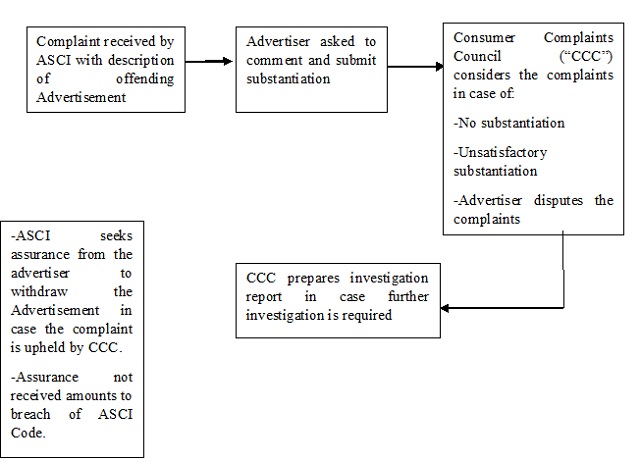Introduction
The Advertising Standards Council of India ("ASCI") has on 22nd February 2021 issued draft guidelines pertaining to "Influencer Advertising on Digital Media" ("Guidelines") for stakeholder consultation. The Guidelines set out the need for differentiating between general content and promotional content shared by Influencers. The content posted by the Influencers have far reaching consequence on the viewers due to huge number of users and followers associated with the Influencers. Thus, it is important that the user/ viewer is able to identify Advertisement content as such. The Advertisement should not be misleading to the consumers, hence it is important to create a clear distinction between content and Advertisement. The final Guidelines will be issued by the ASCI on or before 31st March 2021. The final Guidelines will be applicable to all promotional posts published through Digital Media on or after 15th April 2021.
Important Terms as per the Guidelines:
- Advertisement: An Advertisement is defined as a paid-for communication, addressed to the public or a section of it, the purpose of which is to influence the opinions and/or behaviour of those to whom it is addressed.
- Digital Media: The definition of Digital Media is wide in scope to include internet (any sponsored posts, branded content, in-gaming ads, advergames, gamification content on the internet), to video-on demand/free video platforms, and mobile broadcasts, blogs, apps, digital TV, etc.
- Influencer: An Influencer is someone who has access to an audience and the power to affect their audience's purchasing decisions or opinions about a product, service, brand or experience, because of the Influencer's authority, knowledge, position, or relationship with their audience. An Influencer can intervene in an editorial context or in collaboration with a brand to publish content. This definition seems to broaden the scope of Influencer to also include people who collaborate for editing and might not actually create the content but only help in editing the same.
Summary of the Guidelines:
- The Advertisement being posted by the Influencers should mandatorily have a disclosure label. A disclosure label is a clarification that a piece of communication/ information is an Advertisement.
- The average consumer should be aware that the content he/she is seeing is an Advertisement, without having to click or otherwise interact with it. It needs to be clear/ obvious, and consumers should not have to work to figure out whether what they are hearing, viewing or experiencing is an Advertisement.
- It is the responsibility of the Influencers or publishing account as well as the advertiser for whose brand the Advertisement is made, to make the disclosure label upfront on the Advertisement.
- In case of a brand using a virtual Influencer, the onus of the disclosure is upon the advertiser.
- Disclosure labels must be added from the list of approved labels. Only permitted disclosure labels will be considered as adequate as consumers may not be familiar with various creative ways in which advertisers and Influencers may wish to convey that the said communication is an Advertisement.
- The list of approved labels as provided in the Guidelines are as follows:
- #ad
- #collab
- #sponsored
- #partnership
- #promo
- The disclosure label used to highlight advertising content needs to be upfront, prominent, appropriate for the channel and suitable for all potential devices.
- The disclosure label must be in English or translated into any language which is well understood by the average consumer who is viewing the Advertisement.
- Blanket disclosures in a profile/ bio/ about section will not be considered adequate because people visiting the site might read individual reviews or watch individual videos without seeing the disclosure on another page.
- If the Advertisement is only a picture post such as on Instagram stories or Snapchat, the label needs to be superimposed over the picture and it should be visible clearly to the consumer seeing the picture post.
- If the Advertisement is a video post and it is not accompanied by a text post, the disclosure label should be superimposed on the video in a manner that is easily visible to the viewer.
- In case the Advertisement is a live stream, the disclosure label should be placed periodically for 5 (five) seconds at the end of every minute so that users who see part of stream can see the disclosure.
- In the case of Advertisement being an audio media, the disclosure label must be clearly announced at the beginning and at the end of the audio.
- Filters should not be applied to social media Advertisements if they exaggerate the effect of the claim that the brand is making.
- The Influencer must do their due diligence about any technical or performance claims made by them. Evidence of due diligence would include correspondence with the advertiser or brand owner confirming that the specific claim made in the Advertisement is capable of scientific substantiation.
- The contractual agreement between advertiser and Influencer should have clauses pertaining to disclosure, use of filters as well as due diligence in order to safeguard rights of both parties.
Complaint Handling
ASCI will issue a notice to both brand owner and Influencer for violation of any Guideline in the case of a consumer complaint and take suo motu cognizance of a potentially objectionable Advertisement. In the case of disappearing posts, a screenshot with timestamp would suffice as prima-facie evidence of the Advertisement having been published.
The complaint process against an Advertisement is as follows:

Conclusion
Considering the wide reach and the rise in the number of Influencers, it is important that a direction is available to the Influencers to advertise content and also take responsibility for their content and claims which they make through the Advertisements. These guidelines will go a long way in protecting the consumers from misleading/ fake Advertisements and also put the Influencers under an obligation to provide true and correct information to the consumers and take accountability for any fake claims made in the Advertisement posts.
The content of this article is intended to provide a general guide to the subject matter. Specialist advice should be sought about your specific circumstances.

